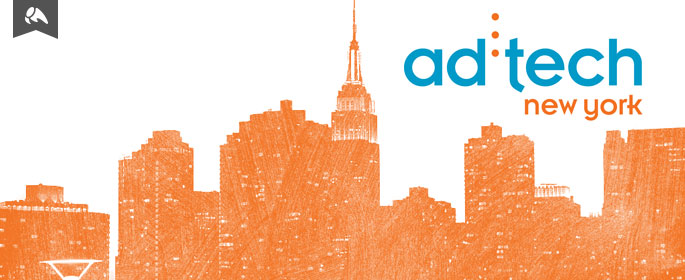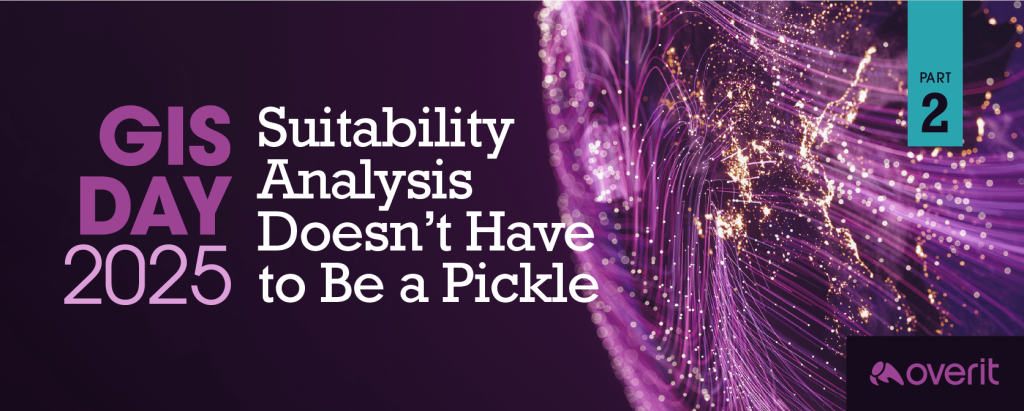
We’re back! Are you ready for another day of ad:tech NY liveblogging? I hope so because we’re about to bring it.
[I think some folks partied a bit too hard last night – this morning’s keynote is a little, um, lighter than yesterday. Poor folks. Drink water.]
Kicking things off this morning we have a keynote all about the battle taking place for your attention. In a world where multitasking is on the rise, content creators are vying for viewer’s attention more than ever before. Content is being written specifically tailored to consumer behavior with a strong focus on social sharing and social interaction. This morning we’re going to hear how Bravo and Bunim/Murray Productions are building and integrating shareable moments, using second-screen apps, and keeping their viewers connected.
Our speakers this morning are Kesila Childers, Maura Curtin, Erika Faust, Ellen Stone and Ken Todd. Jeanine Poggi will be moderating.
Jeanine: Can we start by identifying one or two ways storytelling has evolved recently as we look at participatory TV?
Ellen: We’ve taken storytelling to a very different level at Bravo. It’s changed how we go to market and execute shows. We want to know how we can better engage. We launch things like transmedia – taking your storytelling across platforms in a meaningful way. In Top Chef, a chef gets eliminated, it goes into a web series called “Last Chance Kitchen” where they have the opportunity to compete and return. When we first did it, we had this player who had been eliminated too early. Then they came back four episodes later because they won the webisode e series. It created surprise, it created favorites, etc. What happened is that the episode skyrocketed because the social sphere skyrocketed it. It’s a completely different way of storytelling.
We had an interactive social study this summer with The Singles Project that we shot almost in real-time. As we were shooting, our “stars” were being influenced by the audience because they could see their reactions. It absolutely impacted the show.
Jeanine: Ken, how does Showtime adopt these technologies as a premium channel?
Ken: We are primarily scripted drama. We don’t have a lot of opportunity to effect the outcome. We’re in our third series of creating interactive content as you watch. We’ve developed 350 episodes worth of interactive content. We’re very mindful of some things.
- You don’t want to interrupt the drama as they’re watching, at all. We make sure the interactive content is timed at appropriate places.
- There’s a sweet spot when the credits roll. As that interactive experience ends, it transitions into “the watercooler,” that’s the point at which you want to talk about what just happened. We present behind the scenes, director commentary, predictions for what will happen next, polls. People are very engaged in that.
We’ve architected this to work either if you’re watching in real-time or On Demand.
Jeanine: Is there a balance between real-time watching and “binge” watching (people who want a whole series in one sitting)?
Kesila: Any type of tweeting is making that show “event programming.” One way people are doing time shifting is where they’ll put tweets over the programming (as an overlay) because people want to see their name in lights. It has what people have been saying about the episode. It gives viewers a chance to see what they’re thinking up on the screen.
Jeanine: What’s the goal of these digital initiatives?
Ellen: We’re using data to understand how social is effective and where we put it into play. While we have the opportunity to use social to get the initial tune in, we’re also using it to get a deeper engagement. That has been even more effective. Building those “OMG” moments, that’s what we’re holding on to. What we’re trying to do is build loyalty through social and through understanding the right time to get to the conversation – before, during or after?
Maura: We recently did a study that showed optimized data-driven posts include reach by 91 percent. That refers to posts that go up at “the best time,” not necessarily in real time. They’re seeing a trend toward data-driven. Blindly scheduling something for today at 2pm performs the absolute worst.
Ken: The voice in which you are speaking makes a difference, too. They’re trying to increase the engagement with the posts they’re creating – maybe with a question or a topic they know will start a discussion.
Jeanine: At what point in the dev process are you thinking about social?
Kesila: At a certain point, digital was an afterthought. Now our company is looking at the stories we tell and how we can make them interactive when it’s appropriate. Not everything needs a digital component. I don’t need to know stats about the hot tub Real Worlders are in right now (ew). You don’t want to tire the audience, but you do want to make them brand ambassadors.
Ken: We know that with all this content you’re targeting a specific type of fan – it’s your highly-engaged super fan. About 70-80 percent of viewers are doing something on a second screen while they’re watching TV. We’re trying to capture some of that behavior and enthusiasm.
Erika: At Nielsen, we’re seeing consumers are very drawn to these digital extensions. In a recent survey we did, 36% of people said they enjoy TV more because of social.
Ellen: When people get to experience what everyone else is experiencing, in their own chairs, that lifts the overall experience. What we found was, regardless if YOU were participating in the poll/trivia, you like to see how your thinking compares to other’s thinking.
Jeanine: How willing are viewers to lean forward in this?
Ellen: It’s the super fans who are leaning in. But when we do surveys afterwards, its the people who were in their arm chairs who enjoyed it, even if they didn’t participate in the moment. The Real Housewives have a really engaged audience. It’s almost the whole fan base. Top Chef’s fans are really purists. They’re not as engaged, but the whole foodie community wants to see what everyone is saying.
Ken: People are going to interact in the platform they’re comfortable in.
Jeanine: How do you decide which platforms are right for which show?
Kesila: You need to be on YouTube in some form. It’s the second largest search network. You also have to look at the audience you’re trying to reach and where they are. Where are your consumers adopting technology? Tell the story innovatively there.
Ellen: Facebook native video has been gangbusters for us. Facebook and Twitter for real-time. Instagram to get better brand build. Content needs to reflect EMPIRE – Engage, Monetization, Portable, Interactive, Rewarding and Emotive. That’s Bravo’s formula, which she’s not sure she was allowed to share. We won’t tell anyone.
Jeanine: How do advertisers and marketers get on board with this?
Erika: Marketers want to find those lightning in a bottle moments. Advertisers are also very curious about getting in the mix of social TV for every day campaigns. They want to use it to help with media planning and buying. They’re looking at the social affinity – do people who tweet about my brand watch Bravo? Will this be a good home for my ad?
Ellen: You have to be cautious because authenticity is paramount to marketing. If we want to bring a sponsor into a show, we can have them tweet on the subject of the actual episode that’s organic. We’ve had beauty companies tweet about how the Real Housewives look beautiful on the show. We look at ways to scale the social opportunities without upsetting anyone.
Kesila: We work with advertisers to put products into our Real World houses. Last year we featured a particular alarm clock and there was a lot of social sharing around that.
Maura: We all know the Oreo dunking in the dark – you can’t plan for that. It’s either going to happen organically or it’s not. You need to partner with folks who have great content who can showcase your brand.
Jeanine: How is the marketing and content digital team evolving in your organization? Is it marketing, PR? Who is in charge of these strategies?
Ken: We’re seeing a convergence of all those disciplines. Marketing, PR and Content are talking to each other all the time.
Ellen: We pulled the social group out of Consumer Marketing. They now have a line into digital, into PR, into dev. There’s no definitive silos anymore. Everybody has to think of it as a singular goal.
Jeanine: How are you measuring success? Ratings? Tweets?
Erika: Use the metrics that work for you. It could be reach, visibility, engagement, etc.
Maura: It’s really an engagement story. We (Social Flow) report on the success of social media for clients. When you optimize it, engagement goes through the roof. It’s engagement and sentiment.
Ellen: We also look at sentiment. Are people talking about it, but not in the way we want them to talk about it? That’s not success. It’s about RTs, shares, sentiment. Is it monetizable? We do primary research to see how the engagement with social is with our fanbase.
Jeanine: How do we do all of this without being intrusive?
Ellen: One of the things that’s happening is that people are doing everything at the same time. It’s a two or three screen experience. The way you do it is really understand the consumer and their behavior. Constantly update the research and the studies to makes sure you’re doing it in a way that adds to the experience, not detracts.
Ken : It’s not only about usage metrics. It’s also about using focus groups. Let people watch the episode and then poll them after. People love polls. There’s no right answer to a poll but people want to answer with the majority.
Maura: You would think my show is starting at 8pm, so I’m gonna schedule some posts during that time. That does not work. You can’t predict when people will be talking about you.
Jeanine: How has data influenced how you approach the second screen?
Ellen: A lot of it is telling us when to schedule posts, when not to schedule. We’re pushing some of our social into continuity efforts because its more effective than tweeting before the show starts. People are talking about the show right before it starts. Social media gives you real time information about how we’ll you’re doing with your marketing, storylines, characters, etc.
Ken: The engagement metric is really important. Even if your community is small, if you have a lot of engagement, it still has a lift effect.
Jeanine: Going forward, what should content producers do? What’s next?
Ellen: Be open to everything. Know your brand so you can edit and curate well.
Erika: Use data to be more sophisticated.
Ken: Keep an open minds. Don’t stick to preconceived notions about what you think will work. It’s going to be more of a data driven environment. We’re doing interactive experiences on smart TVs.
Maura: There’s a finite amount of attention. You have to be smarter about how you’re going to get your content into the hands of people who will move the needle for your business. If you’re not paying attention to data but you’re going off “I think, probably, maybe” that’s a bad idea.
Kesila: Create a larger story world. Don’t take away from the linear experience.
====
Wow. Killer panel! But no rest for the weary, we’re off to the next one!





